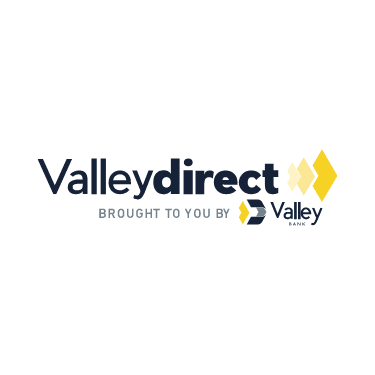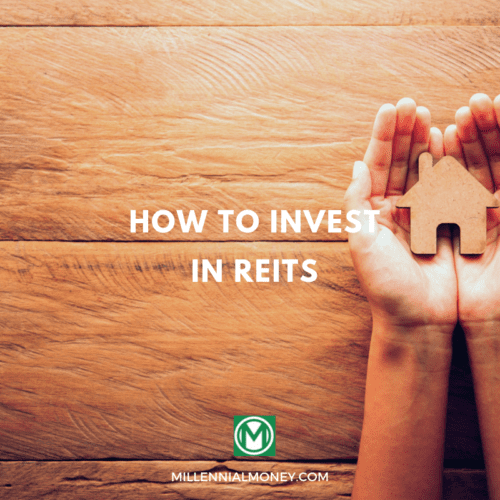Reaching the $100,000 mark is a major milestone, whether you’ve been diligently saving or find yourself with a sudden windfall of cash. There’s no shortage of investment options out there, and how you choose to invest your funds could have a major impact on your returns. In this guide, we’ll break down some of the best ways to invest $100000.
5 Best Ways to Invest $100k
Here are the top 5 ways to invest $100,000:
1. Real Estate
Investing in real estate comes with a lot of benefits; it’s a great way to diversify your portfolio when you have six figures to invest. Real estate can also provide you with passive income if you purchase a rental, giving you a steady cash flow.
When you buy a property, you also get equity. And real estate properties tend to benefit from appreciation, so your investments are likely to increase in value over time.
Additionally, real estate investing comes with tax advantages. For example, you can report expenses related to the property, like repairs and mortgage interest, as deductions. And if you sell one property, you can use the sale’s proceeds to buy a new one without incurring capital gains taxes.
Here are a few ways to get started in real estate investing:
- REITs: Real estate investment trusts let you indirectly invest in several properties at once, like apartment complexes and shopping centers.
- Rental properties: One of the most popular ways to invest in real estate is to buy rental properties. You can earn monthly income from short-term vacation rentals or take on long-term tenants.
- Crowdfunding: Real estate crowdfunding is a peer-to-peer method that lets you pool your money with other investors to back properties, giving you a portion of their income.
- Flipping: $100,000 is a solid downpayment to help you start flipping houses. If you want to take a hands-on approach, you can make money by purchasing properties, renovating them, then selling them for a profit. This bold strategy is best left to investors with some expertise.
I’ve been investing with Fundrise since 2017. Disclosure: when you sign up with my link, I earn a commission. All opinions are my own.
2. ETFs and Mutual Funds
Exchange-traded funds (ETFs) and mutual funds are also solid investments when you have $100,000 at your disposal. Both types of funds are collections, or baskets, filled with stocks and bonds that are pre-selected.
Some funds are actively managed by financial experts who hand-pick the assets, while index funds track a stock market index like the S&P 500.
More often than not, mutual funds are actively managed and ETFs are passively managed, but there are actively and passively managed mutual funds and ETFs out there.
Because most ETFs are passively managed, they often come with lower management fees. They tend to have lower investment minimums than mutual funds, too.
Mutual funds are priced once daily and are bought and traded directly with companies, while ETFs can be openly traded throughout the day on major stock exchanges.
Here are three of the biggest benefits of investing in mutual funds and ETFs:
- Diversification: ETFs and mutual funds allow you to invest in a diversified portfolio of stocks and bonds and make your investments less risky.
- Management: Mutual funds and ETFs are either managed by a financial expert or they track an index. Neither requires you to become an expert or track market performance yourself to invest.
- Affordability: Investing in mutual funds and ETFs can be more cost-effective than investing in individual stocks, and you can save on management fees with index funds.
3. Stocks
If you want to get into active trading, investing in individual stocks can be a great way to diversify your investment portfolio, as long as you do it the right way.
Let’s start with the good—investing in stocks puts you in the driver’s seat and lets you invest in companies you care about or see potential in. It also comes with the potential for higher returns than you might see with a mutual fund or ETF.
Stocks offer the benefit of high liquidity, and there’s a lot of long-term growth potential. Some stocks consistently pay out dividends to their shareholders each year, too.
But it’s also important to consider the drawbacks of investing in stocks. First, stock investing can be significantly riskier than investing in funds. The market is unpredictable, and even the best-researched stocks underperform sometimes.
Along those lines, relying too heavily on a small selection of stocks can leave your portfolio with a lack of diversification.
You should also keep in mind that investing in stocks can be time-consuming. It requires you to educate yourself on the companies you’re investing in and stay up-to-date on the market.
Bottom Line: Investing in stocks can enhance your portfolio and give you some control over your investments. Just be aware of the risk and research time that comes with it, and keep a healthy mix of assets.
INVESTMENT AND INSURANCE PRODUCTS ARE: NOT A DEPOSIT • NOT FDIC INSURED • NO BANK GUARANTEE • MAY LOSE VALUE4. Peer-to-Peer Loans
If you want to branch out and explore alternative investments, check out peer-to-peer lending. P2P lending platforms let investors lend money to individuals and businesses, bypassing banks and credit unions.
Getting started can be as simple as signing up with a reputable P2P platform, funding your account, and choosing what loans you’d like to invest in.
It’s crucial to vet borrowers before agreeing to lend them money. Establish your own risk tolerance and investment goals, then take a close look at potential borrowers’ credit profiles and loan terms.
Once you’ve locked into a loan, keep tabs on your investment to keep your portfolio on track and ensure the borrower is making payments.
Here are a few of the benefits of investing with peer-to-peer loans.
- Potential returns: These loans can be riskier than some alternatives, with the risk of default always being a possibility. That being said, they have the potential for high returns.
- Diversification: P2P loans can be a unique addition to your portfolio.
- Transparency: The best P2P platforms let you know what you’re getting into, showing you the loan’s terms and info about borrowers upfront.
- Minimum investments: P2P platforms tend to have low minimum investment requirements. While you might have $100k to invest, you don’t have to invest all (or even most) of it in P2P loans to get in the game.
- Impact: Investing in peer-to-peer loans could allow you to make a direct impact on someone’s life. For example, your loan could help an entrepreneur launch their business.
5. CDs or High-Yield Savings
Whether you’re looking for a safe spot to park your emergency fund or you’re still deciding where you want to invest your $100,000, a savings account is a great place to start.
Just keep in mind that not all savings accounts are created equally—while brick-and-mortar banks have a lot to offer, they can’t typically keep up with interest rates offered by online banks. These banks have fewer operational costs, so they’re able to provide accountholders with higher APY and fewer fees.
Check out one of the best high-yield savings accounts to decide which bank might be the right fit for you. If you’re okay with sacrificing a little bit of liquidity, a CD (certificate of deposit) is another secure spot to stash some of your funds.
With CDs, you agree to let your money sit for a set amount of time, usually between 3 months and 5 years. The longer the term you agree to, the higher interest rates you can expect.
While you can definitely find higher returns elsewhere, putting your money in a savings account or CD from an FDIC-insured bank is a safe, low-risk investment.
Tips for Investing 100k
Now that you have an idea of where to invest your $100,000, here are a few considerations to keep in mind as you get started:
Consult with a Financial Advisor
$100,000 is no small amount. It could be smart to consult with a financial advisor whether you’re a beginner or a seasoned investor.
Financial advisors can help you devise a financial plan, establish your risk tolerance and investment goals, and choose investments that align with them.
J.P. Morgan’s Personal Advisors Service is a solid choice. You get a custom financial plan, expertly curated portfolios, investment management, and ongoing support.
You can use the service with as little as $25,000 to invest. The service costs 0.40%-0.60%, depending on your assets.
INVESTMENT AND INSURANCE PRODUCTS ARE: NOT A DEPOSIT • NOT FDIC INSURED • NO BANK GUARANTEE • MAY LOSE VALUEContribute to Retirement Accounts
Everyone should invest in their future by saving money for retirement. If you have $100,000 to invest, you should definitely consider putting some of it in your retirement account(s).
If you have a 401(k) or similar tax-deferred retirement account through your employer, you can invest up to the $22,500 contribution limit in 2023. Plan participants aged 50 or older can contribute an additional $7,500 of catchup contributions.
In many cases, it makes sense to max out your retirement plan contributions. At the very least, you should contribute enough to max out an employee match if your company offers one.
Contributing to an IRA (individual retirement account) is also a smart move. There are two main types of IRAs—traditional and Roth. Traditional IRAs require you to pay income tax at retirement, while Roth IRA contributions are taxed upfront.
Balance Investing with Debt Repayment
Having $100,000 to invest is exciting, but it’s important to take a holistic approach to your finances and consider the big picture. Paying down debt can significantly improve your financial health.
If you have any high-interest debt, you need to prioritize paying it down before you invest.
While you don’t necessarily need to pay off your mortgage or student loans to start investing, you should zero in on credit card debt and unsecured loans with high-interest rates. Check out our guide to getting out of debt fast for some pointers.
Build Your Emergency Fund
You never know what life has in store, so it’s incredibly important to have an emergency fund in place.
An emergency fund is essentially a savings account for the unexpected. It can provide you with a financial cushion if you lose your job, have a health emergency, or face a costly inconvenience like a car or appliance breakdown.
Most financial experts agree that your emergency fund should have enough money to cover three to six months of living expenses. Take stock of your monthly expenses and income to determine what you need to save, and consider parking your funds in a high-yield savings account.
If you have a stable job, multiple income opportunities, liquid assets, and insurance, you may even consider investing your emergency fund.
Decide What Kind of Investor You Are
One of the first decisions you need to make before investing $100k is what type of investor you want to be. You essentially have three options:
- DIY: If you’re interested in researching the market, deciding what to invest in for yourself, and executing trades, you can open a self-directed brokerage account from an online broker or stock trading platform.
- Robo advisor: If you’re content with a more hands-off approach but don’t necessarily need a financial advisor, consider using a robo-advisor. These platforms use your risk tolerance and financial goals to select and manage your investments for you at a low cost.
- Financial advisor: If you want a tailored financial plan, human support, and a professionally managed portfolio and don’t mind paying for it, hiring an investment advisor could be worth the cost.
Assess Your Risk Tolerance
Before you invest your money in the market, a P2P loan, or real estate, take a minute to establish what your risk tolerance is. Risk tolerance is basically how much loss you can comfortably handle when an asset performs poorly.
Investors with high risk tolerances are willing to take on more of a gamble for a chance at higher returns.
For example, people with extremely low risk tolerance usually lean towards safe choices like bonds and income funds. Individuals with higher risk tolerance opt for assets like stocks and ETFs.
You can work with a financial advisor or use online tools to determine what your risk tolerance is.
Consider Taxes and Fees
When you invest, it’s important to keep taxes in mind. There are several strategies for minimizing capital gains taxes on stocks, including:
- Making long-term investments
- Investing in tax-advantaged retirement accounts
- Lowering your tax bracket
- Donating stocks to charity
- Leaving assets to beneficiaries to sell immediately
It’s also important to consider investing fees. Some types of investment accounts, services, and trades come with service fees. Be mindful of them and look for low-cost investment platforms with minimal costs.
Diversify Your Portfolio
When it comes to investing, you should never put all your eggs in one basket. That’s especially true when you’re investing a large sum like $100,000.
For example, if you invest all of your money in stocks from one or two companies and their value dips, you could be left with a major loss.
When you spread your allocation across multiple asset classes, you reduce your risk of being negatively impacted by market volatility.
Try Dollar Cost Averaging
There are several investing strategies to choose from. One of the ones I recommend most is dollar cost averaging.
This strategy involves contributing a set amount of money to your investment accounts at regular intervals. If you’re investing $100k, this strategy can be more sensible than investing everything at once.
Dollar cost averaging eliminates the need to track every move the stock market makes, since you’re constantly investing regardless of stock prices.
In addition to making you a more disciplined investor, this strategy reduces risk and pays off in the long run. Over time, your average purchase price levels out as you invest routinely.
How Should You Invest $100k?
There isn’t a one-size-fits-all approach to investing, and you have plenty of ways to invest $100,000. The best investment strategy for you depends on your personal finance goals, risk tolerance, and investing preferences.
Regardless of the investment vehicle you choose, there are some strategies you can use to make the most of your investments. Once you create a financial plan, pay down debt, and build up your emergency fund, you’re on the right path to start investing.
J.P. Morgan Wealth Management is a business of JPMorgan Chase & Co., which offers investment products and services through J.P. Morgan Securities LLC (“J.P. Morgan”), a registered broker dealer and investment adviser, member FINRA and SIPC. Millennial Money is a publisher of J.P. Morgan, (“Publisher”). The Publisher will receive compensation from J.P. Morgan if you provide contact details to speak with a J.P. Morgan representative. Compensation paid to the Publisher will be up to $500 per completed contact form. Compensation provides an incentive for the Publisher to endorse J.P. Morgan and therefore information, opinions, or referrals are subject to bias. J.P. Morgan and the Publisher are not under common ownership or otherwise related entities, and each are responsible for their own obligations. Investing involves market risk, including possible loss of principal, and there is no guarantee that investment objectives will be achieved.






No comments yet. Add your own